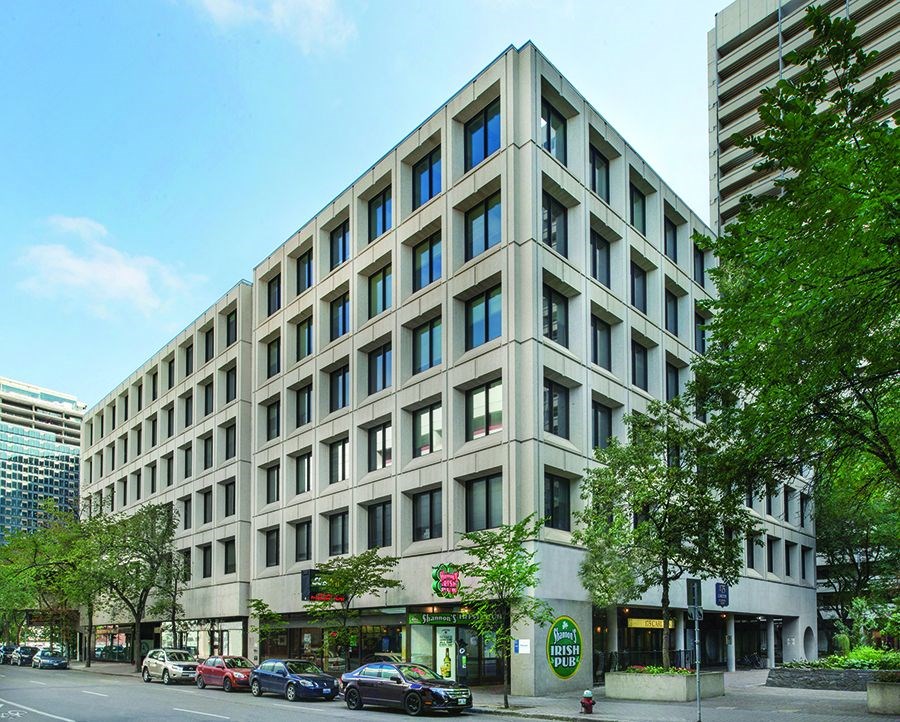Double-digit vacancies in Prairie offices are posing hard questions for landlords as businesses adapt to the new normal.
Third-quarter statistics from Colliers International peg Calgary vacancies at 27.5 per cent, Edmonton at 19 per cent, Regina at 17.5 per cent and Saskatoon at 14.5 per cent. Winnipeg is in the best shape at 12.7 per cent.
Regina has even bucked the trend of declining office vacancies, increasing from 16.9 per cent a year ago. The shift comes even as Saskatchewan is poised for economic growth on the back of strong commodity prices.
“We’re a resource economy. Our growth doesn’t necessarily equate to office jobs,” explained Richard Jankowski, managing director for Colliers in Saskatchewan.
And even for the office jobs that are being created, hybrid work arrangements and a lack of workers mean that space secured under long-term leases prior to the pandemic isn’t being fully utilized and there’s little demand from companies for sublease space.
Colliers data indicate that sublease space in Regina and Saskatoon is a lower proportion of office vacancies than anywhere else in the country.
“Business are struggling to adapt with return-to-work,” Jankowski said. “The building could be fully leased, but it’s 50 per cent vacant.”
While a few buildings that were completed prior to the pandemic are seeing elevated vacancies, creating cash flow issues for landlords that have construction debts to service, the biggest issues are in B and C-class space.
Tenants may not be giving up space now, but as renewal dates approach, many are looking at smaller spaces or opting for shorter leases that give them room to scale up space as circumstances change. They’re also being courted with greater inducements from landlords hoping to keep space filled.
“It’s forced the reinventing of the landlord-tenant relationship, for sure,” Jankowski said.
But it’s also created opportunities to repurpose older space, something Calgary has made headlines for doing with five downtown office properties totalling 665,000 square feet. A similar trend is now playing out in Winnipeg, helping improve market fundamentals.
“Vacancy has declined quite dramatically in Winnipeg over the last couple of quarters, especially Q2 to Q3,” said Dan Chubey, managing director for Colliers in Winnipeg. “A component of that that would be attributed to some downtown office buildings being repurposed into residential or for other use.”
Recent transactions include Winnipeg-based Alston Properties Ltd.’s purchase in May 2022 of 175-185 Carlton, a 50-year-old property being partially redeveloped with 35 residential units set to complete in fall 2023. The office component will shrink by a third to 84,105 square feet.
An investor has also purchased 325 Broadway, a 95,140-square-foot property built in 1993 and the long-time home of the Canada Revenue Agency, for a boutique hotel.
Chubey says the removal of older, lower class space, is raising the average asking rate in the market because remaining space is of higher quality and typically more expensive.
The current average asking rate for office space in the city is $16.46 per square foot, up from $14.90 a year ago.
Many tenants remain cautious in terms of space requirements but most are eager to see workers return. According to the Downtown Winnipeg Business Improvement Zone, which represents downtown businesses, 64% of downtown office workers have returned, up from 47 per cent six months ago.
Office space has value for employers, Chubey said, even as asking rates rise.
“As you get back into the workplace, you realize pretty quickly why the office is there in the first place,” he said. “The ability to attract and retain talent, the ability to collaborate as a team, the ability to truly understand culture is difficult to replicate in a work-from-home model.”



